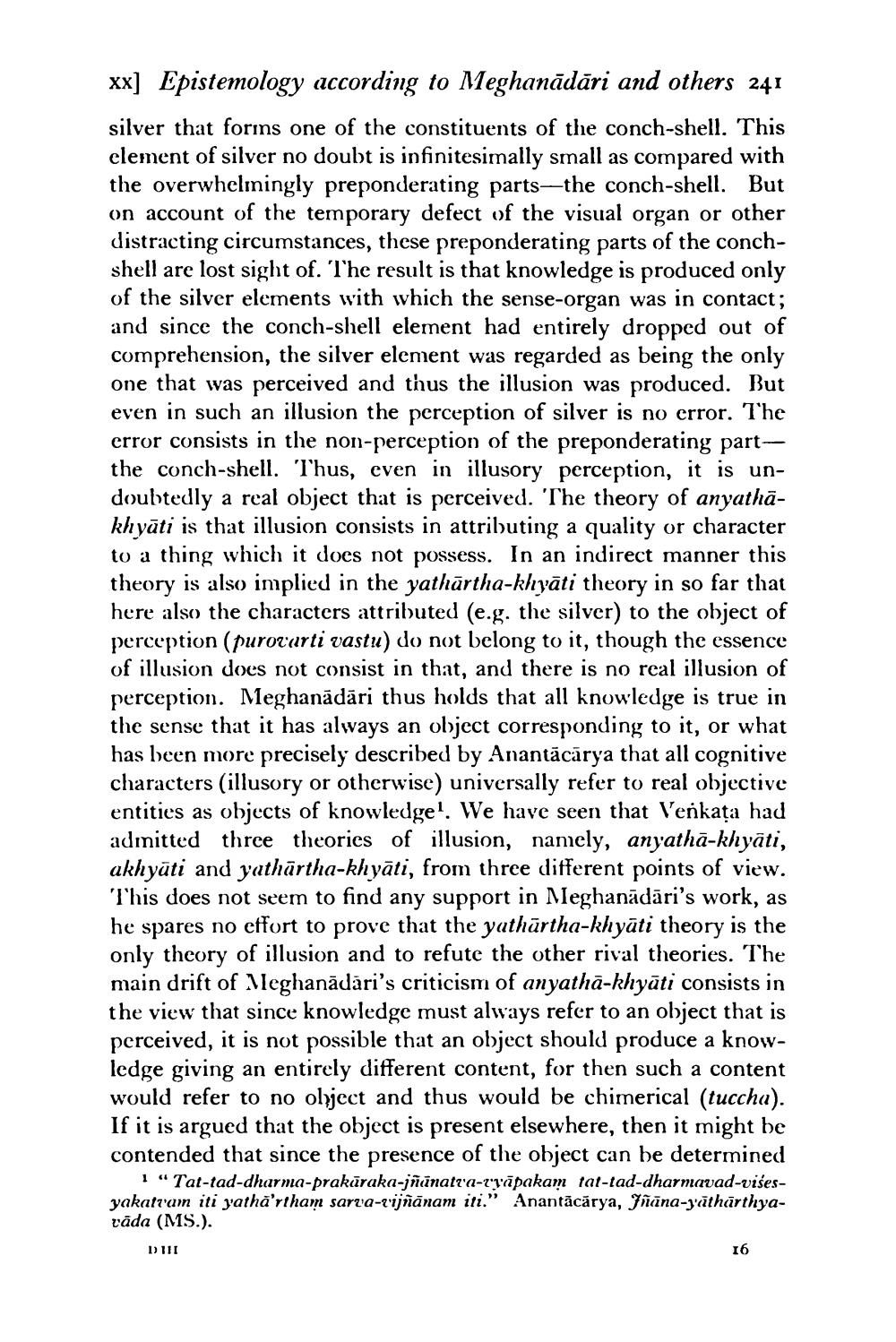________________
xx] Epistemology according to Meghanādāri and others 241 silver that forins one of the constituents of the conch-shell. This element of silver no doubt is infinitesimally small as compared with the overwhelmingly preponderating parts—the conch-shell. But on account of the temporary defect of the visual organ or other distracting circumstances, these preponderating parts of the conchshell are lost sight of. The result is that knowledge is produced only of the silver elements with which the sense-organ was in contact; and since the conch-shell element had entirely dropped out of comprehension, the silver element was regarded as being the only one that was perceived and thus the illusion was produced. But even in such an illusion the perception of silver is no error. The error consists in the non-perception of the preponderating partthe conch-shell. Thus, even in illusory perception, it is undoubtedly a real object that is perceived. 'The theory of anyathākhyāti is that illusion consists in attributing a quality or character to a thing which it does not possess. In an indirect manner this theory is also implied in the yathārtha-khyāti theory in so far that here also the characters attributed (e.g. the silver) to the object of perception (purovarti vastu) do not belong to it, though the essence of illusion does not consist in that, and there is no real illusion of perception. Meghanādāri thus holds that all knowledge is true in the sense that it has always an object corresponding to it, or what has been more precisely described by Anantācārya that all cognitive characters (illusory or otherwise) universally refer to real objective entities as objects of knowledge'. We have seen that Venkața had admitted three theories of illusion, namely, anyatha-khyāti, akhyāti and yathārtha-khyāti, from three different points of view. This does not seem to find any support in Meghanādāri's work, as he spares no effort to prove that the yathārtha-khyāti theory is the only theory of illusion and to refute the other rival theories. The main drift of Meghanādāri's criticism of anyatha-khyāti consists in the view that since knowledge must always refer to an object that is perceived, it is not possible that an object should produce a knowledge giving an entirely different content, for then such a content would refer to no ohject and thus would be chimerical (tuccha). If it is argued that the object is present elsewhere, then it might be contended that since the presence of the object can be determined
1 " Tat-tad-dharma-prakūraka-jñānatt'a-zYapakam tat-tad-dharmavad-visesyakattam iti yathā'rtham sarva-z'ijñānam iti." Anantăcărya, Jñana-Jatharthyarāda (MS.).
16
1) 111




